 Search by Keyword
|
"LADY MADONNA"
(John Lennon – Paul McCartney)
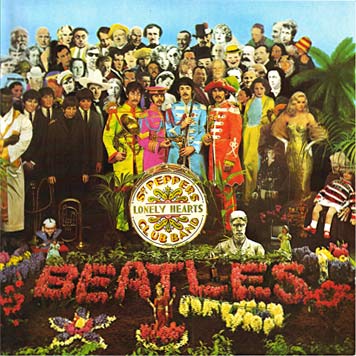 1967 was the year of Psychedelia for The Beatles. From the single "Strawberry Fields Forever," to their album "Sgt. Pepper's Lonely Hearts Club Band," their world anthem "All You Need Is Love" and then their "Magical Mystery Tour" project, The Beatles arguably put aside straightforward rock'n'roll to spearhead the "summer of love" movement around the world. Their impact on the music scene as well as world culture was enormous, perpetuating newer "hip" recording artists to emerge and run the course, bringing what became a short-lived genre of music to an inevitable conclusion. 1967 was the year of Psychedelia for The Beatles. From the single "Strawberry Fields Forever," to their album "Sgt. Pepper's Lonely Hearts Club Band," their world anthem "All You Need Is Love" and then their "Magical Mystery Tour" project, The Beatles arguably put aside straightforward rock'n'roll to spearhead the "summer of love" movement around the world. Their impact on the music scene as well as world culture was enormous, perpetuating newer "hip" recording artists to emerge and run the course, bringing what became a short-lived genre of music to an inevitable conclusion.
 By 1968, though, The Beatles felt a need to reinvent themselves once again, but this time not forgetting the groundwork they previously laid in '60s rock music. Growth as songwriters and musical stylists was fine, but they ultimately felt most comfortable as a rock band. And so, 1968 saw them put aside their “hippy” clothes, both literally and figuratively, and move ahead in the direction that they felt best suited them. From within this mindset came "Lady Madonna." "It's not outright rock, but it's that kind of thing," Paul explained in 1968. "We think the time is right." By 1968, though, The Beatles felt a need to reinvent themselves once again, but this time not forgetting the groundwork they previously laid in '60s rock music. Growth as songwriters and musical stylists was fine, but they ultimately felt most comfortable as a rock band. And so, 1968 saw them put aside their “hippy” clothes, both literally and figuratively, and move ahead in the direction that they felt best suited them. From within this mindset came "Lady Madonna." "It's not outright rock, but it's that kind of thing," Paul explained in 1968. "We think the time is right."

January 1965 issue of National Geographic
Songwriting History
The negative publicity that The Beatles received in the British press about the December 1967 debut of their film "Magical Mystery Tour" on BBC television did not appear to deter McCartney in the least. In January of 1968, he went to work composing what would become their next British #1 single.
 Paul has cited different lyrical influences throughout the years. According to Steve Turner's book “A Hard Day's Write,” a recollection of American singer/guitarist Richie Havens tells an interesting story about the song. Havens happened to be with McCartney in a Greenwich Village club watching a Jimi Hendrix performance when someone came up and asked Paul if America was the inspiration for “Lady Madonna.” Paul was said to reply, “No, I was looking through this African magazine and I saw this African lady with a baby. And underneath the picture it said 'Mountain Madonna.' But I said, oh no – 'Lady Madonna' – and I wrote the song.” Paul has cited different lyrical influences throughout the years. According to Steve Turner's book “A Hard Day's Write,” a recollection of American singer/guitarist Richie Havens tells an interesting story about the song. Havens happened to be with McCartney in a Greenwich Village club watching a Jimi Hendrix performance when someone came up and asked Paul if America was the inspiration for “Lady Madonna.” Paul was said to reply, “No, I was looking through this African magazine and I saw this African lady with a baby. And underneath the picture it said 'Mountain Madonna.' But I said, oh no – 'Lady Madonna' – and I wrote the song.”
.jpg) The magazine that Paul referred to was the January, 1965 issue of National Geographic. The picture contained the caption “Mountain Madonna, as seen above, with one child at her breast and another laughing into her face, sees her way of life threatened." It was a picture of a Malayo-Polynesian woman (not African) surrounded by three young children, one of which was feeding at her breast. Undoubtedly, this photo was the inspiration for the line “baby at your breast wonders how you manage to feed the rest.” The November 2017 issue of National Geographic featured the following quote from McCartney: "One particular issue (of the magazine) I saw in the '60s had a woman, and she looked very proud and she had a baby. I saw that as a kind of Madonna thing, mother and child...You know, sometimes you see pictures of mothers and you go, 'She's a good mother.' You could just tell there's a bond and it just affected me, that photo. So I was inspired to write 'Lady Madonna,' my song, from that photo." The magazine that Paul referred to was the January, 1965 issue of National Geographic. The picture contained the caption “Mountain Madonna, as seen above, with one child at her breast and another laughing into her face, sees her way of life threatened." It was a picture of a Malayo-Polynesian woman (not African) surrounded by three young children, one of which was feeding at her breast. Undoubtedly, this photo was the inspiration for the line “baby at your breast wonders how you manage to feed the rest.” The November 2017 issue of National Geographic featured the following quote from McCartney: "One particular issue (of the magazine) I saw in the '60s had a woman, and she looked very proud and she had a baby. I saw that as a kind of Madonna thing, mother and child...You know, sometimes you see pictures of mothers and you go, 'She's a good mother.' You could just tell there's a bond and it just affected me, that photo. So I was inspired to write 'Lady Madonna,' my song, from that photo."
 In an interview for Musician Magazine in 1986, McCartney stated: “How do they do it?...'Baby at your breast – how do they get the time to feed them? Where do they get the money? How do you do this thing that women do?" In the "'White Album' 50th Anniversary" box set book, Paul elaborates: "I like the words: the 'baby at your breast' bit. Actually saying 'baby at your breast' in a pop song was a little bit adventurous then. Although it's not really that controversial, because every painter has done a 'Madonna and Child.'" In an interview for Musician Magazine in 1986, McCartney stated: “How do they do it?...'Baby at your breast – how do they get the time to feed them? Where do they get the money? How do you do this thing that women do?" In the "'White Album' 50th Anniversary" box set book, Paul elaborates: "I like the words: the 'baby at your breast' bit. Actually saying 'baby at your breast' in a pop song was a little bit adventurous then. Although it's not really that controversial, because every painter has done a 'Madonna and Child.'"
 Interestingly, Paul doesn't mention this magazine at all when asked about the song during interviews for his book “Many Years From Now.” “'Lady Madonna' started off as the Virgin Mary, then it was a working-class woman, of which obviously there's millions in Liverpool. The people I was brought up amongst were often Catholic; there are a lot of Catholics in Liverpool because of the Irish connection and they are often quite religious. When they have a baby I think they see a big connection between themselves and the Virgin Mary with her baby. So the original concept was the Virgin Mary but it quickly became symbolic of every woman; the Madonna image but as applied to ordinary working-class woman. It's really a tribute to the mother figure, it's a tribute to woman. 'Your Mother Should Know' is another. I think women are very strong, they put up with a lot of sh*t, they put up with the pain of having a child, of raising it, cooking for it, they are basically skivies a lot of their lives, so I always want to pay a tribute to them." Interestingly, Paul doesn't mention this magazine at all when asked about the song during interviews for his book “Many Years From Now.” “'Lady Madonna' started off as the Virgin Mary, then it was a working-class woman, of which obviously there's millions in Liverpool. The people I was brought up amongst were often Catholic; there are a lot of Catholics in Liverpool because of the Irish connection and they are often quite religious. When they have a baby I think they see a big connection between themselves and the Virgin Mary with her baby. So the original concept was the Virgin Mary but it quickly became symbolic of every woman; the Madonna image but as applied to ordinary working-class woman. It's really a tribute to the mother figure, it's a tribute to woman. 'Your Mother Should Know' is another. I think women are very strong, they put up with a lot of sh*t, they put up with the pain of having a child, of raising it, cooking for it, they are basically skivies a lot of their lives, so I always want to pay a tribute to them."
 Paul adds yet more details as to the song's inspiration in his 2021 book "The Lyrics." "The fact that my mother Mary died when I was fourteen is something I never got over. A song that portrays a very present, nurturing mother has got to be influenced by that terrible sense of loss. The question about how 'Lady Madonna' manages 'to feed the rest' is particularly poignant to me, since you don't have to be a psychoanalyst to figure out that I myself was one of 'the rest.' I must have felt left out. It's really a tribute to the mother figure, a tribute to women." Paul apparently continued the "Madonna" religious theme by mentioning money being "heaven sent" and "Sunday morning creeping like a nun." Paul adds yet more details as to the song's inspiration in his 2021 book "The Lyrics." "The fact that my mother Mary died when I was fourteen is something I never got over. A song that portrays a very present, nurturing mother has got to be influenced by that terrible sense of loss. The question about how 'Lady Madonna' manages 'to feed the rest' is particularly poignant to me, since you don't have to be a psychoanalyst to figure out that I myself was one of 'the rest.' I must have felt left out. It's really a tribute to the mother figure, a tribute to women." Paul apparently continued the "Madonna" religious theme by mentioning money being "heaven sent" and "Sunday morning creeping like a nun."
 "My single favorite aspect of the song is the recurring phrase 'See how they run.' It comes from the nursery rhyme 'Three Blind Mice," with that rather less-than-nurturing farmer's wife who cuts off their tails with a carving knife. That reference lends a slightly dark aspect to the song. In any case, the word 'run' also refers to stockings. One of my abiding memories of growing up was that, in addition to the other rather more important problems women faced, they were always ladering their stockings - 'Thursday night, your stockings needed mending.'" All of her problems and chores apparently led to her "lying on the bed" in exhaustion. "My single favorite aspect of the song is the recurring phrase 'See how they run.' It comes from the nursery rhyme 'Three Blind Mice," with that rather less-than-nurturing farmer's wife who cuts off their tails with a carving knife. That reference lends a slightly dark aspect to the song. In any case, the word 'run' also refers to stockings. One of my abiding memories of growing up was that, in addition to the other rather more important problems women faced, they were always ladering their stockings - 'Thursday night, your stockings needed mending.'" All of her problems and chores apparently led to her "lying on the bed" in exhaustion.
 In the "White Album 50th Anniversary" book, Paul adds: "The film director Allison Anders says if you look at my songs there's great support for the female and that is what made her able to write feminine characters for her screenplays." Other McCartney songs that feature a scenario concerning a woman include "Eleanor Rigby," "She's Leaving Home" and "For No One.” In the "White Album 50th Anniversary" book, Paul adds: "The film director Allison Anders says if you look at my songs there's great support for the female and that is what made her able to write feminine characters for her screenplays." Other McCartney songs that feature a scenario concerning a woman include "Eleanor Rigby," "She's Leaving Home" and "For No One.”
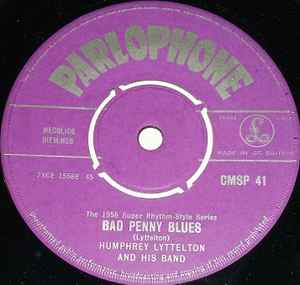 As for the musical inspiration for “Lady Madonna,” a 1956 Top Twenty British hit entitled “Bad Penny Blues” by Humphrey Lyttleton And His Band is commonly cited. Being that this was the first British jazz record to make it that high on the charts in the UK, The Beatles were well aware of it. “What he's doing is a, sort of, 'Bad Penny Blues,'” Ringo stated in 1968 about Paul's piano playing on “Lady Madonna” in imitation of Johnny Parker, the pianist on the Humphrey Lyttleton record. As for the musical inspiration for “Lady Madonna,” a 1956 Top Twenty British hit entitled “Bad Penny Blues” by Humphrey Lyttleton And His Band is commonly cited. Being that this was the first British jazz record to make it that high on the charts in the UK, The Beatles were well aware of it. “What he's doing is a, sort of, 'Bad Penny Blues,'” Ringo stated in 1968 about Paul's piano playing on “Lady Madonna” in imitation of Johnny Parker, the pianist on the Humphrey Lyttleton record.
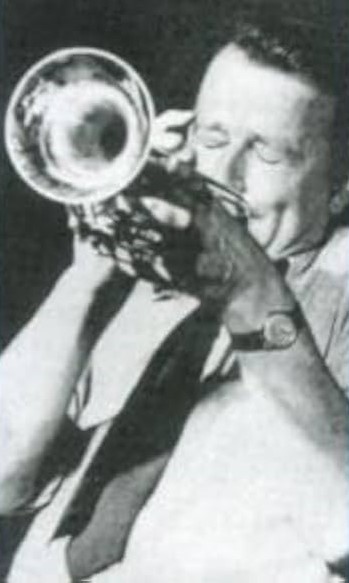 Paul did not copy the actual piano riff, however, just the feel of what Johnny Parker was doing. “You can't copyright a rhythm and rhythm was all that they had borrowed,” stated Humphrey Lyttleton for the book “A Hard Day's Write.” He added: “I was very complimented. Although none of The Beatles cared for traditional jazz, they all knew and liked 'Bad Penny Blues' because it was a bluesy, skiffley thing rather than a trad exercise.” Paul did not copy the actual piano riff, however, just the feel of what Johnny Parker was doing. “You can't copyright a rhythm and rhythm was all that they had borrowed,” stated Humphrey Lyttleton for the book “A Hard Day's Write.” He added: “I was very complimented. Although none of The Beatles cared for traditional jazz, they all knew and liked 'Bad Penny Blues' because it was a bluesy, skiffley thing rather than a trad exercise.”
 Paul goes into more musical detail about writing the song in “Many Years From Now”: "'Lady Madonna' was me sitting down at the piano trying to write a bluesy boogie-woogie thing. I got my left hand doing an arpeggio thing with the chord, an ascending boogie-woogie left hand, then a descending right hand. I always like that, the juxtaposition of a line going down meeting a line going up. That was basically what it was. It reminded me of Fats Domino for some reason, so I started singing a Fats Domino impression. It took my voice to a very odd place." Regarding the vocal style he used here, Paul elaborates a bit more in his 2021 Hulu documentary series "McCartney 3,2,1": "With songs like that, I like to kind of change my voice a bit, so I'd like to sort of get a harder voice." Paul goes into more musical detail about writing the song in “Many Years From Now”: "'Lady Madonna' was me sitting down at the piano trying to write a bluesy boogie-woogie thing. I got my left hand doing an arpeggio thing with the chord, an ascending boogie-woogie left hand, then a descending right hand. I always like that, the juxtaposition of a line going down meeting a line going up. That was basically what it was. It reminded me of Fats Domino for some reason, so I started singing a Fats Domino impression. It took my voice to a very odd place." Regarding the vocal style he used here, Paul elaborates a bit more in his 2021 Hulu documentary series "McCartney 3,2,1": "With songs like that, I like to kind of change my voice a bit, so I'd like to sort of get a harder voice."
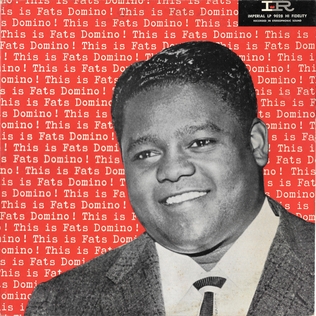 The Fats Domino influence may very well have been an inspiration lyrically for the song as well. His 1956 hit “Blue Monday,” sung in a similar tone to what Paul ended up singing on “Lady Madonna,” runs down the plight of a hard working man throughout the days of the week, the same pattern Paul included in the lyrics of his song but as being the experience of a mother. “I was writing the words out to learn it for an American TV show,” Paul explained in “Many Years From Now,” "and I realized I missed out Saturday. So I figured it must have been a real night out.” The Fats Domino influence may very well have been an inspiration lyrically for the song as well. His 1956 hit “Blue Monday,” sung in a similar tone to what Paul ended up singing on “Lady Madonna,” runs down the plight of a hard working man throughout the days of the week, the same pattern Paul included in the lyrics of his song but as being the experience of a mother. “I was writing the words out to learn it for an American TV show,” Paul explained in “Many Years From Now,” "and I realized I missed out Saturday. So I figured it must have been a real night out.”
 In 1968, Ringo gave his impression of the overall feel of the song. “I describe it as 'rock-a-swing.'...Paul originally did it on piano with a touch of Fats Waller. 'Lady Madonna' is The Beatles' own rock'n'roll record. We've been trying to make a rock'n'roll record ever since we started and, as far as I know, we haven't done a decent one yet. This is another bash; it's pretty near it. If we get together for a jam session or something, between recordings, we invariably start playing the basic rock chords and rhythms as soon as we pick up our instruments. If we had brought this record out at a different time, maybe a few months ago or something, no one would have called it rock'n'roll, but now everyone's giving it that tag, because it's an 'in' tag.” John Lennon also agreed at that time, describing the song as “like pretty early rock stuff. We never went away from it. There isn't a Beatle album without some rock'n'roll on it.” Paul also concurred at the time: “It is not outright rock, but it's that kind of thing. We think the time is right!” In 1968, Ringo gave his impression of the overall feel of the song. “I describe it as 'rock-a-swing.'...Paul originally did it on piano with a touch of Fats Waller. 'Lady Madonna' is The Beatles' own rock'n'roll record. We've been trying to make a rock'n'roll record ever since we started and, as far as I know, we haven't done a decent one yet. This is another bash; it's pretty near it. If we get together for a jam session or something, between recordings, we invariably start playing the basic rock chords and rhythms as soon as we pick up our instruments. If we had brought this record out at a different time, maybe a few months ago or something, no one would have called it rock'n'roll, but now everyone's giving it that tag, because it's an 'in' tag.” John Lennon also agreed at that time, describing the song as “like pretty early rock stuff. We never went away from it. There isn't a Beatle album without some rock'n'roll on it.” Paul also concurred at the time: “It is not outright rock, but it's that kind of thing. We think the time is right!”
 In his 1980 Playboy magazine interview, John gives his later impression of the song and hints that maybe he was involved a little in its writing. When asked who wrote it, he replies, “Paul. Good piano, but the song never really went anywhere. Maybe I helped him on some of the lyrics, but I'm not proud of them either.” While Paul doesn't mention any input from John, Ringo related back in 1968 that he "couldn't really say what the lyrics mean, because only Paul knew what he had in his mind. Paul composed the song at home." In his 1980 Playboy magazine interview, John gives his later impression of the song and hints that maybe he was involved a little in its writing. When asked who wrote it, he replies, “Paul. Good piano, but the song never really went anywhere. Maybe I helped him on some of the lyrics, but I'm not proud of them either.” While Paul doesn't mention any input from John, Ringo related back in 1968 that he "couldn't really say what the lyrics mean, because only Paul knew what he had in his mind. Paul composed the song at home."
 In "McCartney 3,2,1," Paul concurs that he wrote the song at his home at 7 Cavendish Ave, St. Johns Wood in London, but cites yet another influence for his melody and sound. "The piano; it's still there at Abbey Road actually, but we used to call it Mrs. Mills piano 'cause there was a pianist who used to do all this, sort of...stride. But Mrs. Mills piano inspired that. Y'know, I mean, I wrote it at home but it was like, 'I've got to do this on that funky little piano.'" English pianist Gladys Mills, known as Mrs. Mills, recorded many records in the '60s and '70s and popularized sing-alongs and party tunes in a music hall style, which was very familiar to The Beatles at the time. In "McCartney 3,2,1," Paul concurs that he wrote the song at his home at 7 Cavendish Ave, St. Johns Wood in London, but cites yet another influence for his melody and sound. "The piano; it's still there at Abbey Road actually, but we used to call it Mrs. Mills piano 'cause there was a pianist who used to do all this, sort of...stride. But Mrs. Mills piano inspired that. Y'know, I mean, I wrote it at home but it was like, 'I've got to do this on that funky little piano.'" English pianist Gladys Mills, known as Mrs. Mills, recorded many records in the '60s and '70s and popularized sing-alongs and party tunes in a music hall style, which was very familiar to The Beatles at the time.
Recording History
The Beatles had planned a trip to India to further their studies of Transcendental Meditation with the Maharishi. John and George had scheduled to depart on February 15th, 1968 while Paul and Ringo planned on leaving four days later, on February 19th. Figuring they would be gone until late April, they scheduled some studio time at EMI to record a new single to be released in their absence, then record a new album later in the year.
 With this in mind, the band arrived in EMI Studio Three on February 3rd, 1968 at 2:30 pm for the first of two scheduled recording sessions for that day. The group's first order of business was recording McCartney's new song “Lady Madonna.” This first three-and-a-half-hour session was spent laying down a rhythm track, the only musicians playing being Paul and Ringo. “Paul plays piano on it,” Ringo remembered. “We said to George Martin, 'How did they do it on “Bad Penny Blues”? And he answered, 'They used brushes.' So, we put an off-beat on it.” After rehearsals, Paul and Ringo laid down three takes of this rhythm track, both instruments being recorded on the first track of the four-track tape. The first take was incomplete, the second making it all the way through the song with some interesting jazzy syncopations on the piano, and the third full rendition being the best. At 6 pm, the session was over which allowed for an hour break before the second session began. With this in mind, the band arrived in EMI Studio Three on February 3rd, 1968 at 2:30 pm for the first of two scheduled recording sessions for that day. The group's first order of business was recording McCartney's new song “Lady Madonna.” This first three-and-a-half-hour session was spent laying down a rhythm track, the only musicians playing being Paul and Ringo. “Paul plays piano on it,” Ringo remembered. “We said to George Martin, 'How did they do it on “Bad Penny Blues”? And he answered, 'They used brushes.' So, we put an off-beat on it.” After rehearsals, Paul and Ringo laid down three takes of this rhythm track, both instruments being recorded on the first track of the four-track tape. The first take was incomplete, the second making it all the way through the song with some interesting jazzy syncopations on the piano, and the third full rendition being the best. At 6 pm, the session was over which allowed for an hour break before the second session began.
 Interestingly, there has been quite a bit of controversy about which piano Paul played on this song. "Abbey Road (as the studio is now called) seems to think that an old upright that they have was used on the track," explained Ken Scott in his 2012 book "Abbey Road To Ziggy Stardust," "but it was actually the baby grand that was in Number 3. I have heard that they recently threw a big party to celebrate the installation of a new board in Number 2 and the upright had a large notice on it saying, 'Lady Madonna Piano - Please Don't Put Drinks On It.' It's possible that the piano part was doubled later with that piano, but it certainly doesn't sound doubled to me, and I know they didn't replace it because the piano was mixed with the drums on the basic track." Interestingly, there has been quite a bit of controversy about which piano Paul played on this song. "Abbey Road (as the studio is now called) seems to think that an old upright that they have was used on the track," explained Ken Scott in his 2012 book "Abbey Road To Ziggy Stardust," "but it was actually the baby grand that was in Number 3. I have heard that they recently threw a big party to celebrate the installation of a new board in Number 2 and the upright had a large notice on it saying, 'Lady Madonna Piano - Please Don't Put Drinks On It.' It's possible that the piano part was doubled later with that piano, but it certainly doesn't sound doubled to me, and I know they didn't replace it because the piano was mixed with the drums on the basic track."
 "There is something weird about the sound of that piano though," recalled author Ken Scott. "In talking with John Kurlander, who was a second engineer at EMI Studios at that point, he mentioned that he used to play it really hard and it would sound just like the record: slightly out of tune. Of course, Paul played it really hard. And as far as that sign goes, I just wish these people, who weren't around at the time, would maybe speak with those that were there to try and get the history correct." In 1968, EMI Studio Three contained a Hamburg Steinway Baby Grand piano that, according to Ken Scott, was indeed the piano used by Paul McCartney during the recording of "Lady Madonna." "There is something weird about the sound of that piano though," recalled author Ken Scott. "In talking with John Kurlander, who was a second engineer at EMI Studios at that point, he mentioned that he used to play it really hard and it would sound just like the record: slightly out of tune. Of course, Paul played it really hard. And as far as that sign goes, I just wish these people, who weren't around at the time, would maybe speak with those that were there to try and get the history correct." In 1968, EMI Studio Three contained a Hamburg Steinway Baby Grand piano that, according to Ken Scott, was indeed the piano used by Paul McCartney during the recording of "Lady Madonna."
 Ken Scott also remembered something interesting from this session that highlights the kindness of a Beatle. "George Harrison had signed on to create the soundtrack for a movie called 'Wonderwall.' It was during these sessions that Harrison and I developed a friendship that would carry on for many years...We finished 'Wonderwall' fairly late one night and I had a Beatles session the next day to record the basics for what had turned out to be 'Lady Madonna.' I had to get back into the studio by 2 pm to set up, never knowing if the band was going to come in by 2:30 or not. It turned out that everyone else came in on time that day except for George, who had showed up much later. As soon as he got in, he went out of his way to make sure that I was all right since he'd kept me up so late the night before. As it ended up, I left the session early, officially due to 'being sick,' but it was really due to the long hours of the previous night. George Harrison was particularly sympathetic, and never let on to the others the real cause of my 'illness.'" Ken Scott also remembered something interesting from this session that highlights the kindness of a Beatle. "George Harrison had signed on to create the soundtrack for a movie called 'Wonderwall.' It was during these sessions that Harrison and I developed a friendship that would carry on for many years...We finished 'Wonderwall' fairly late one night and I had a Beatles session the next day to record the basics for what had turned out to be 'Lady Madonna.' I had to get back into the studio by 2 pm to set up, never knowing if the band was going to come in by 2:30 or not. It turned out that everyone else came in on time that day except for George, who had showed up much later. As soon as he got in, he went out of his way to make sure that I was all right since he'd kept me up so late the night before. As it ended up, I left the session early, officially due to 'being sick,' but it was really due to the long hours of the previous night. George Harrison was particularly sympathetic, and never let on to the others the real cause of my 'illness.'"
 At 7 pm, they started their second session which was also held in EMI Studio Three. Overdubs commenced for “Lady Madonna,” track two of the tape containing Paul on bass, Ringo on drums playing a more standard 4/4 beat with sticks, and John and George simultaneously playing melody lines on “fuzzed” guitars, both instruments being played through the same amplifier, something they'd done three years before on “Nowhere Man.” At 7 pm, they started their second session which was also held in EMI Studio Three. Overdubs commenced for “Lady Madonna,” track two of the tape containing Paul on bass, Ringo on drums playing a more standard 4/4 beat with sticks, and John and George simultaneously playing melody lines on “fuzzed” guitars, both instruments being played through the same amplifier, something they'd done three years before on “Nowhere Man.”
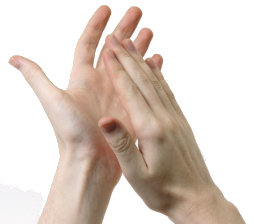 Paul recorded lead vocals onto track four of the tape, this deliberately being overloaded to create an edgy quality not unlike that of Fats Domino. Also on this track was John contributing some mouth noises in imitation of a tuba along with some handclaps. The group then all gathered around the microphone to perform more backing vocals onto track three. Along with a tambourine and some doodling on a mellotron, Ringo describes what they experimented with vocally for this track: "There's a lovely sound on 'Lady Madonna,' that's like sort of muted trumpets, or a kazoo, or something. But, in actual fact, it's just John and Paul (and George as the recording suggests) sort of humming through their hands into a mike. It was purely by accident that we discovered that sound. We had just finished taping a bit of the record, and John and Paul started to hum into the mike with their hands cupped round their mouths. When we played back the piece of tape with this bit tagged on the end, it sounded great, so we decided to use it." Paul recorded lead vocals onto track four of the tape, this deliberately being overloaded to create an edgy quality not unlike that of Fats Domino. Also on this track was John contributing some mouth noises in imitation of a tuba along with some handclaps. The group then all gathered around the microphone to perform more backing vocals onto track three. Along with a tambourine and some doodling on a mellotron, Ringo describes what they experimented with vocally for this track: "There's a lovely sound on 'Lady Madonna,' that's like sort of muted trumpets, or a kazoo, or something. But, in actual fact, it's just John and Paul (and George as the recording suggests) sort of humming through their hands into a mike. It was purely by accident that we discovered that sound. We had just finished taping a bit of the record, and John and Paul started to hum into the mike with their hands cupped round their mouths. When we played back the piece of tape with this bit tagged on the end, it sounded great, so we decided to use it."
 Mark Lewisohn, in his book "The Beatles Recording Sessions" describes this overdub as John and George singing “scat backing vocals while munching Marmite flavored crisps,” the author adding that “the crunching was omitted from the remix.” The mock brass overdub would be perfected at a later time as an additional overdub. With all for tracks of the tape filled by 1:30 am the following morning, this second session was over and all left for the night. Mark Lewisohn, in his book "The Beatles Recording Sessions" describes this overdub as John and George singing “scat backing vocals while munching Marmite flavored crisps,” the author adding that “the crunching was omitted from the remix.” The mock brass overdub would be perfected at a later time as an additional overdub. With all for tracks of the tape filled by 1:30 am the following morning, this second session was over and all left for the night.
 The next day was used to record the song John wanted as their next single, namely his gorgeous “Across The Universe.” Then, on February 6th, 1968, two more recording sessions were booked with the intention of finishing “Lady Madonna” from a few days before. This time they were in EMI Studio One, which was quite large and used primarily for recording orchestras. The first session on this day was used for recording George's lilting “The Inner Light,” Ringo being absent at this time because of him performing on the live BBC TV show “Cilla” starring Cilla Black, a television being brought into the studio for the other Beatles to watch in between recording sessions. The next day was used to record the song John wanted as their next single, namely his gorgeous “Across The Universe.” Then, on February 6th, 1968, two more recording sessions were booked with the intention of finishing “Lady Madonna” from a few days before. This time they were in EMI Studio One, which was quite large and used primarily for recording orchestras. The first session on this day was used for recording George's lilting “The Inner Light,” Ringo being absent at this time because of him performing on the live BBC TV show “Cilla” starring Cilla Black, a television being brought into the studio for the other Beatles to watch in between recording sessions.
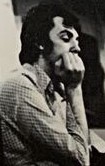 Undoubtedly inspired by their vocal simulation of brass instruments on their first session for "Lady Madonna," Paul decided that actual saxophonists should be recruited for the song. Since there was a time crunch involved, there wasn't an opportunity for George Martin to write a score for them to play. Instead, Paul insisted on finding four accomplished brass musicians to be present in the studio for the second session that evening. Could that be arranged? Undoubtedly inspired by their vocal simulation of brass instruments on their first session for "Lady Madonna," Paul decided that actual saxophonists should be recruited for the song. Since there was a time crunch involved, there wasn't an opportunity for George Martin to write a score for them to play. Instead, Paul insisted on finding four accomplished brass musicians to be present in the studio for the second session that evening. Could that be arranged?
 The book “The Beatles Recording Sessions” explains: “Laurie Gold, a session 'fixer' for EMI, often used by George Martin and The Beatles, was called into swift action.” Baritone sax player Harry Klein remembers: “They were in a real flap to find four musicians and called on Laurie to conjure some up for them. I was in the bath at about 6:30 in the evening when Laurie called and said, 'Are you working tonight?' 'No, I'm in the bath!' 'Well get over to EMI as quick as you can, and how can I find a tenor player?' I suggested he call Ronnie Scott, the chap who runs the London jazz club, and sure enough, when I got to Abbey Road, Ronnie was there, along with Bill Jackman and Bill Povey. Paul didn't recognize Ronnie Scott until we told him who he was." Paul, however, recalls that he personally invited Ronnie Scott to the session. In the "'White Album' 50th Anniversary Super Deluxe Edition" book, he states: "I used to know Ronnie and I'd meet him in Soho and go to his jazz club quite a lot. I said, 'We need a nice wild sax solo.' He came along to the session, played it great!” The book “The Beatles Recording Sessions” explains: “Laurie Gold, a session 'fixer' for EMI, often used by George Martin and The Beatles, was called into swift action.” Baritone sax player Harry Klein remembers: “They were in a real flap to find four musicians and called on Laurie to conjure some up for them. I was in the bath at about 6:30 in the evening when Laurie called and said, 'Are you working tonight?' 'No, I'm in the bath!' 'Well get over to EMI as quick as you can, and how can I find a tenor player?' I suggested he call Ronnie Scott, the chap who runs the London jazz club, and sure enough, when I got to Abbey Road, Ronnie was there, along with Bill Jackman and Bill Povey. Paul didn't recognize Ronnie Scott until we told him who he was." Paul, however, recalls that he personally invited Ronnie Scott to the session. In the "'White Album' 50th Anniversary Super Deluxe Edition" book, he states: "I used to know Ronnie and I'd meet him in Soho and go to his jazz club quite a lot. I said, 'We need a nice wild sax solo.' He came along to the session, played it great!”
 This second session, also in EMI Studio One, began at 9 pm. Before the sax players arrived, a tape reduction of the previous “take three” was done, which combined all of the vocal work of tracks three and four to track four only, leaving track three open for more overdubs, this reduction now referred to as "take four.” Onto this, Paul recorded another lead vocal along with John and George singing tight “see how they run” backing vocals as well as the now-perfected mock brass singing. John and George performed handclaps as well, while Ringo added a tambourine and Paul put in another piano overdub. Engineer Geoff Emerick recalls: “We spent a lot of time getting the right piano sound for 'Lady Madonna.' We ended up using a cheaper type of microphone and heavy compression and limiting.” In his book “Here, There And Everywhere,” Geoff Emerick adds: “As usual, Paul was looking for a different kind of sound, so I took the same cheap microphone that we had used for John's lead vocal on 'I Am The Walrus' and positioned it way down in the sound holes, which yielded a muffled midrangey tone.” This second session, also in EMI Studio One, began at 9 pm. Before the sax players arrived, a tape reduction of the previous “take three” was done, which combined all of the vocal work of tracks three and four to track four only, leaving track three open for more overdubs, this reduction now referred to as "take four.” Onto this, Paul recorded another lead vocal along with John and George singing tight “see how they run” backing vocals as well as the now-perfected mock brass singing. John and George performed handclaps as well, while Ringo added a tambourine and Paul put in another piano overdub. Engineer Geoff Emerick recalls: “We spent a lot of time getting the right piano sound for 'Lady Madonna.' We ended up using a cheaper type of microphone and heavy compression and limiting.” In his book “Here, There And Everywhere,” Geoff Emerick adds: “As usual, Paul was looking for a different kind of sound, so I took the same cheap microphone that we had used for John's lead vocal on 'I Am The Walrus' and positioned it way down in the sound holes, which yielded a muffled midrangey tone.”
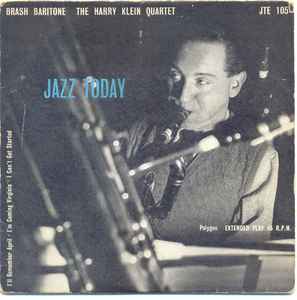 With these overdubs complete, the four-track tape was again full. Another tape reduction was then made to once again combine tracks three and four to track four, thus opening up track three for yet another overdub. Then entered the brass musicians. Harry Klein continues, “There was no written music but we played around with a few riffs until Paul liked what he heard. And then we recorded it – 101 times! I remember there was a big pile of meditation books in the corner of the studio, like the back room of a publisher's office, and I also recall that they asked if we wanted a bite to eat. We were expecting a terrific meal but a few minutes later someone returned with pie and chips!” With these overdubs complete, the four-track tape was again full. Another tape reduction was then made to once again combine tracks three and four to track four, thus opening up track three for yet another overdub. Then entered the brass musicians. Harry Klein continues, “There was no written music but we played around with a few riffs until Paul liked what he heard. And then we recorded it – 101 times! I remember there was a big pile of meditation books in the corner of the studio, like the back room of a publisher's office, and I also recall that they asked if we wanted a bite to eat. We were expecting a terrific meal but a few minutes later someone returned with pie and chips!”
 Tenor saxophonist Bill Povey remembers: “There was not only no prepared music for us to follow but when Paul called out some chords at us our first reaction was to look at each other and say, 'Well, who plays what?'” Baritone saxophonist Bill Jackman adds: “Paul went through the song on the piano and we were each given a scrap of manuscript paper and a pencil to write out some notes. Had there been music we would have been in and out in about ten minutes. As it was, it took most of the evening, recording it in A-major pitch with the rhythm track playing in our headphones.” Tenor saxophonist Bill Povey remembers: “There was not only no prepared music for us to follow but when Paul called out some chords at us our first reaction was to look at each other and say, 'Well, who plays what?'” Baritone saxophonist Bill Jackman adds: “Paul went through the song on the piano and we were each given a scrap of manuscript paper and a pencil to write out some notes. Had there been music we would have been in and out in about ten minutes. As it was, it took most of the evening, recording it in A-major pitch with the rhythm track playing in our headphones.”
 At the end of this session, the engineering team of George Martin, Geoff Emerick and Jerry Boys, undoubtedly with input from The Beatles, worked at creating a suitable mono mix of the song, two attempts being made. However, neither of these mixes were deemed acceptable for release. This session, which completed the recording of “Lady Madonna,” ended at 2 am the following morning. At the end of this session, the engineering team of George Martin, Geoff Emerick and Jerry Boys, undoubtedly with input from The Beatles, worked at creating a suitable mono mix of the song, two attempts being made. However, neither of these mixes were deemed acceptable for release. This session, which completed the recording of “Lady Madonna,” ended at 2 am the following morning.
 The true mono mix was made on February 15th, 1968 by George Martin, Geoff Emerick and 2nd engineer Martin Benge. Eight attempts were made, numbered 3 through 10, the last undoubtedly being deemed the best. “During the mix we would heavily overdo the effects on the vocal and the piano too, making for a distinctive sound,” recalls Geoff Emerick. The true mono mix was made on February 15th, 1968 by George Martin, Geoff Emerick and 2nd engineer Martin Benge. Eight attempts were made, numbered 3 through 10, the last undoubtedly being deemed the best. “During the mix we would heavily overdo the effects on the vocal and the piano too, making for a distinctive sound,” recalls Geoff Emerick.
 The next time “Lady Madonna” would grace a recording studio was on September 5th, 1968, during the recording of George's “While My Guitar Gently Weeps.” “Take 40” of this song developed into a couple of snatches of other songs, “Lady Madonna” being one of them, this being saved and added onto a “Beatles Chat” tape they were keeping for posterity. The next time “Lady Madonna” would grace a recording studio was on September 5th, 1968, during the recording of George's “While My Guitar Gently Weeps.” “Take 40” of this song developed into a couple of snatches of other songs, “Lady Madonna” being one of them, this being saved and added onto a “Beatles Chat” tape they were keeping for posterity.
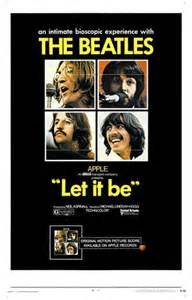 Also, during the recorded sessions that became the “Let It Be” album, The Beatles touched on “Lady Madonna” three times. The first time was in Twickenham Film Studios on January 7th, 1969, and the other two were in Apple Studios on January 24th and 31st of that year. The last of these three was recorded during the “Studio Performance” session that appeared in the “Let It Be” movie, “Lady Madonna” being a simple jammed version that was actually mixed by engineer Glyn Johns on March 11th, 1969 and considered for release on the soundtrack album. In the end, it was deemed to be too rough of a recording to make the grade. However, it did include Paul altering the lyrics to "Lord and lady docker, in your private yacht / all the people wonder why you have such a lot." Also, during the recorded sessions that became the “Let It Be” album, The Beatles touched on “Lady Madonna” three times. The first time was in Twickenham Film Studios on January 7th, 1969, and the other two were in Apple Studios on January 24th and 31st of that year. The last of these three was recorded during the “Studio Performance” session that appeared in the “Let It Be” movie, “Lady Madonna” being a simple jammed version that was actually mixed by engineer Glyn Johns on March 11th, 1969 and considered for release on the soundtrack album. In the end, it was deemed to be too rough of a recording to make the grade. However, it did include Paul altering the lyrics to "Lord and lady docker, in your private yacht / all the people wonder why you have such a lot."
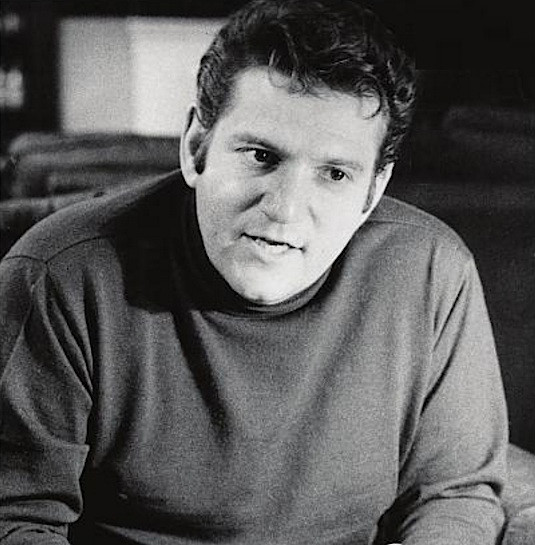 You may have noticed that a stereo mix of the song hadn't been made before the song was released in early 1968. This was because there was no intention of “Lady Madonna” being included on an album at that time, singles only being printed with mono copies then. This was soon to change, of course, but as of 1968, stereo singles basically didn't exist. However, because of a September 1969 deal that new Beatles manager Allen Klein had struck with Capitol Records in America for a higher royalty rate, a new US album was being arranged which strung together Beatles singles that hadn't been released on an album yet. Now a need surfaced for a stereo mix of “Lady Madonna” for inclusion on what became the “Hey Jude” album (also known as “The Beatles Again”), You may have noticed that a stereo mix of the song hadn't been made before the song was released in early 1968. This was because there was no intention of “Lady Madonna” being included on an album at that time, singles only being printed with mono copies then. This was soon to change, of course, but as of 1968, stereo singles basically didn't exist. However, because of a September 1969 deal that new Beatles manager Allen Klein had struck with Capitol Records in America for a higher royalty rate, a new US album was being arranged which strung together Beatles singles that hadn't been released on an album yet. Now a need surfaced for a stereo mix of “Lady Madonna” for inclusion on what became the “Hey Jude” album (also known as “The Beatles Again”),
 Only one attempt was made at creating this stereo mix, which was done in the control room of EMI Studio Two on December 2nd, 1969 by the engineering team of George Martin, Geoff Emerick, Phil McDonald and Richard Lush. Interestingly, each of Ringo's two drum tracks appear on opposite channels in this stereo mix, while Paul's final fading piano chord cuts off slightly sooner on this stereo version. Only one attempt was made at creating this stereo mix, which was done in the control room of EMI Studio Two on December 2nd, 1969 by the engineering team of George Martin, Geoff Emerick, Phil McDonald and Richard Lush. Interestingly, each of Ringo's two drum tracks appear on opposite channels in this stereo mix, while Paul's final fading piano chord cuts off slightly sooner on this stereo version.
 As for Paul's solo career, the first time "Lady Madonna" was officially recorded was on August 28th, 1974 by Geoff Emerick and assisted by Mark Vigars and John Barrett. Paul and his newly revised band Wings entered EMI Studios during the final week of August, 1974, to film and record a project entitled "One Hand Clapping," which was planned to be released at the time in conjunction with their new single "Junior's Farm / Sally G." After a few days of filming and recording full band performances, Paul sat at the piano and laid down several songs as solo performances on August 28th of that year, a quick medley of "The Long And Winding Road" and "Lady Madonna" being one of these performances, the first time these Beatles' songs were included in any post-Beatles project. This spontaneous two minute and ten second acoustic medley was eventually officially released on June 14th, 2024 as part of the "One Hand Clapping" double-album as detailed below. As for Paul's solo career, the first time "Lady Madonna" was officially recorded was on August 28th, 1974 by Geoff Emerick and assisted by Mark Vigars and John Barrett. Paul and his newly revised band Wings entered EMI Studios during the final week of August, 1974, to film and record a project entitled "One Hand Clapping," which was planned to be released at the time in conjunction with their new single "Junior's Farm / Sally G." After a few days of filming and recording full band performances, Paul sat at the piano and laid down several songs as solo performances on August 28th of that year, a quick medley of "The Long And Winding Road" and "Lady Madonna" being one of these performances, the first time these Beatles' songs were included in any post-Beatles project. This spontaneous two minute and ten second acoustic medley was eventually officially released on June 14th, 2024 as part of the "One Hand Clapping" double-album as detailed below.
 Sometime between May and June of 1976, Paul and his band Wings recorded a version of the song during their “Wings Over The World” tour, the result appearing on their live album "Wings Over America." Also, sometime in 1993, Paul and his band recorded “Lady Madonna” during his “New World Tour,” this recording being contained on his “Paul Is Live” album of that year. Sometime between May and June of 1976, Paul and his band Wings recorded a version of the song during their “Wings Over The World” tour, the result appearing on their live album "Wings Over America." Also, sometime in 1993, Paul and his band recorded “Lady Madonna” during his “New World Tour,” this recording being contained on his “Paul Is Live” album of that year.
 George Martin and Geoff Emerick returned to the song sometime in 1995 to prepare a new mix for inclusion on the interesting compilation album “Anthology 2.” This version featured mostly the stripped down rhythm track from Paul and Ringo with Paul's lead vocals, adding in selected overdubs sporadically, such as the sax solo and the mock vocal brass from John, Paul and George. An interesting ad-lib saxophone line, originally intended for the conlusion of the song, was included here as well. George Martin and Geoff Emerick returned to the song sometime in 1995 to prepare a new mix for inclusion on the interesting compilation album “Anthology 2.” This version featured mostly the stripped down rhythm track from Paul and Ringo with Paul's lead vocals, adding in selected overdubs sporadically, such as the sax solo and the mock vocal brass from John, Paul and George. An interesting ad-lib saxophone line, originally intended for the conlusion of the song, was included here as well.
 Then, between April 1st and May 18th, 2002, another live version of “Lady Madonna” was recorded by McCartney and his band for both of his successful live releases “Back In The US” and “Back In The World.” Then, between April 1st and May 18th, 2002, another live version of “Lady Madonna” was recorded by McCartney and his band for both of his successful live releases “Back In The US” and “Back In The World.”
 George Martin gave “Lady Madonna” yet another overhaul sometime between 2004 and 2006, this time with his son Giles Martin, for inclusion on the album “Love” as a companion piece to the Cirque du Soliel production of the same name. They interspersed elements of “Why Don't We Do It In The Road?,” “While My Guitar Gently Weeps,” “Ob-La-Di, Ob-La-Da,” “I Want You (She's So Heavy)” and “Hey Bulldog” into this interesting mashup. Paul was quite happy with this new mix because of one certain element finally being heard. "You can finally hear the sax player Ronnie Scott...He came along to the session, played it great but, of course, in the mix we buried it. After he heard it on the radio, he said, 'What did you do to my solo?' So on 'Love,' at the end of 'Lady Madonna,' you finally hear Ronnie!" George Martin gave “Lady Madonna” yet another overhaul sometime between 2004 and 2006, this time with his son Giles Martin, for inclusion on the album “Love” as a companion piece to the Cirque du Soliel production of the same name. They interspersed elements of “Why Don't We Do It In The Road?,” “While My Guitar Gently Weeps,” “Ob-La-Di, Ob-La-Da,” “I Want You (She's So Heavy)” and “Hey Bulldog” into this interesting mashup. Paul was quite happy with this new mix because of one certain element finally being heard. "You can finally hear the sax player Ronnie Scott...He came along to the session, played it great but, of course, in the mix we buried it. After he heard it on the radio, he said, 'What did you do to my solo?' So on 'Love,' at the end of 'Lady Madonna,' you finally hear Ronnie!"
A recording of Paul performing the song at Amoeba Music in Hollywood, California was recorded on June 27th, 2007, this being included on the 2019 released album "Amoeba Gig."
 Sometime in 2015, Giles Martin once again returned to "Lady Madonna" to create a new mix of the song for inclusion on a newly released version of "Beatles 1." Sometime in 2015, Giles Martin once again returned to "Lady Madonna" to create a new mix of the song for inclusion on a newly released version of "Beatles 1."
Paul recorded yet another live version of the song at Citi Field in New York City sometime between July 17th and 21st, 2009, for inclusion on his “Good Evening New York City” album
 Sometime in 2018, Giles Martin gave yet more attention to "Lady Madonna" for inclusion on the "'White Album' 50th Anniversary Super Deluxe" box set. Two new mixes were made, the first being the unreleased "take two" of Paul and Ringo playing the rhythm track. The second mix was of an extract of the original track three, complete with their goofing around, their crunching of Marmite crisps, and their mellotron doodling. Sometime in 2018, Giles Martin gave yet more attention to "Lady Madonna" for inclusion on the "'White Album' 50th Anniversary Super Deluxe" box set. Two new mixes were made, the first being the unreleased "take two" of Paul and Ringo playing the rhythm track. The second mix was of an extract of the original track three, complete with their goofing around, their crunching of Marmite crisps, and their mellotron doodling.
Song Structure and Style
While "Lady Madonna" is quite typically made up of verses and bridges, just like the majority of the rest of the Beatles catalog, the sheer amount of them staggers the mind. It parses out to 'verse (instrumental)/ verse/ verse/ bridge/ verse/ verse (instrumental)/ bridge (primarily instrumental)/ verse/ verse (instrumental)/ bridge/ verse' (or aaabaabaaba) with a unique conclusion thrown in as well. And all of this in just over two minutes!
 The first instrumental verse is four measures long, the same length as all but the last verse as we'll see later. This first verse acts as the introduction to the song, this consisting of only the rhythm track of Paul on piano and Ringo on brushed snare. The first instrumental verse is four measures long, the same length as all but the last verse as we'll see later. This first verse acts as the introduction to the song, this consisting of only the rhythm track of Paul on piano and Ringo on brushed snare.
Then begins the second verse, the first vocal verse, which adds in Paul's lead vocals, Ringo's second drum track (with his kick drum mixed rather high) and Paul's bass guitar overdub. This is followed by the third verse with the exact same instrumentation.
 Next comes the first bridge which, like all of them, is eight measures long. While the rhythm track of piano and brushed snare continue as before, Ringo's second drum part is reduced primarily to hi-hat accents on the two- and four-beats of the first six measures. Paul's single-tracked vocal continues as does his bass part, but it all abruptly changes for the seventh and eighth measures. Paul plays half-note chords on the piano and adds to these with bass guitar notes while Ringo accents these beats with brushed cymbal beats. The primary focus, however, is the three-part harmony of John, Paul and George that augments Paul's lead vocal passage “See how they run.” Ringo then finishes off this first bridge with a simple brushed snare flam. Next comes the first bridge which, like all of them, is eight measures long. While the rhythm track of piano and brushed snare continue as before, Ringo's second drum part is reduced primarily to hi-hat accents on the two- and four-beats of the first six measures. Paul's single-tracked vocal continues as does his bass part, but it all abruptly changes for the seventh and eighth measures. Paul plays half-note chords on the piano and adds to these with bass guitar notes while Ringo accents these beats with brushed cymbal beats. The primary focus, however, is the three-part harmony of John, Paul and George that augments Paul's lead vocal passage “See how they run.” Ringo then finishes off this first bridge with a simple brushed snare flam.
 Then comes verse number four which contains all of the elements of the last two verses but adds John and George's simultaneous lead guitar lines, this becoming a very effective counter-melody to Paul's main vocal melody line. Verse five follows directly afterwards while Paul jumps into falsetto for the final word of his last line from the previous verse (“feed the re-eeeeeeeest”). The four saxophonists appear in this fifth verse as well, playing along with John and George on the exact counter-melody that they had played on the previous verse. Also predominant is the handclapping which occurs on the two- and four-beats of each measure. Then comes verse number four which contains all of the elements of the last two verses but adds John and George's simultaneous lead guitar lines, this becoming a very effective counter-melody to Paul's main vocal melody line. Verse five follows directly afterwards while Paul jumps into falsetto for the final word of his last line from the previous verse (“feed the re-eeeeeeeest”). The four saxophonists appear in this fifth verse as well, playing along with John and George on the exact counter-melody that they had played on the previous verse. Also predominant is the handclapping which occurs on the two- and four-beats of each measure.
 The second bridge then follows, the rhythm track of piano and brushed snare as well as the bass guitar and hi-hat accent overdubs still in place as in the previous bridge. However, John, Paul and George's cupped-handed brass overdub is present in the first six measures, along with Ringo's slightly detectibly heard tambourine in the background. Ronnie Scott steals the focus here, though, with his saxophone solo in these first six measures. The final two measures of this bridge follow the pattern set from the first with the four-part harmony “See how they run” while Ringo ends it all with a slightly longer brushed snare fill. Interestingly, John and George begin their dual lead guitar counter-melody line for the next verse a little early with a smartly played introductory riff that actually occurs in the eighth measure of this second bridge. The second bridge then follows, the rhythm track of piano and brushed snare as well as the bass guitar and hi-hat accent overdubs still in place as in the previous bridge. However, John, Paul and George's cupped-handed brass overdub is present in the first six measures, along with Ringo's slightly detectibly heard tambourine in the background. Ronnie Scott steals the focus here, though, with his saxophone solo in these first six measures. The final two measures of this bridge follow the pattern set from the first with the four-part harmony “See how they run” while Ringo ends it all with a slightly longer brushed snare fill. Interestingly, John and George begin their dual lead guitar counter-melody line for the next verse a little early with a smartly played introductory riff that actually occurs in the eighth measure of this second bridge.
 What occurs next is a pairing of verses six and seven, these being a virtual repeat instrumentally of verses four and five, right down to the saxophones and handclaps. The only difference here is the different lyrics, Paul going into falsetto on the final line “music playing in your he-eeeeead.” What occurs next is a pairing of verses six and seven, these being a virtual repeat instrumentally of verses four and five, right down to the saxophones and handclaps. The only difference here is the different lyrics, Paul going into falsetto on the final line “music playing in your he-eeeeead.”
 Then comes the third bridge which is somewhat a combination of the first two bridges in that the cupped-handed brass is heard here but with another lead vocal from Paul on top. The rhythm track elements are heard here as in the other bridges, as well as Paul's bass and Ringo's hi-hat accents. One curious occurrence is in the second measure where there appears to be a vocal faux pas from Paul. After the line “Tuesday afternoon is never-ending” there is what sounds like an audible accentuated “g” sound, as if he was humorously ending the sentence with a vocal exclamation point. (I always thought it was a scratch on my old 45, but it's clear as day on the CD.) The “See how they run” harmonies are once again in place, Ringo crashing the cymbal with emphasis this time around on the downbeat of the seventh measure. John and George's introductory riff is once again in place at the end of this bridge. Then comes the third bridge which is somewhat a combination of the first two bridges in that the cupped-handed brass is heard here but with another lead vocal from Paul on top. The rhythm track elements are heard here as in the other bridges, as well as Paul's bass and Ringo's hi-hat accents. One curious occurrence is in the second measure where there appears to be a vocal faux pas from Paul. After the line “Tuesday afternoon is never-ending” there is what sounds like an audible accentuated “g” sound, as if he was humorously ending the sentence with a vocal exclamation point. (I always thought it was a scratch on my old 45, but it's clear as day on the CD.) The “See how they run” harmonies are once again in place, Ringo crashing the cymbal with emphasis this time around on the downbeat of the seventh measure. John and George's introductory riff is once again in place at the end of this bridge.
 Then comes the eighth and final verse, this one being five measures long instead of four. The fourth measure this time around is actually in 6/4 time instead of 4/4, the measure beginning with the lyric “make ends meet.” Instrumental differences here include the saxophones mimicking the lead guitar counter-melody line at the same time that Paul sings his melody line, which is a lyrical repeat (for emphasis) of the first line of the entire song. Paul jumps into falsetto here as well on the line “make ends me-eeeeet” while John and George mimic Paul's piano riff on their guitars and the saxophones hold out a high note to end their involvement in the song. This verse comes to a halt on an anticipated third beat of the fifth measure, Ringo ending this extended verse with a brushed snare fill to usher in the brief conclusion that follows. Then comes the eighth and final verse, this one being five measures long instead of four. The fourth measure this time around is actually in 6/4 time instead of 4/4, the measure beginning with the lyric “make ends meet.” Instrumental differences here include the saxophones mimicking the lead guitar counter-melody line at the same time that Paul sings his melody line, which is a lyrical repeat (for emphasis) of the first line of the entire song. Paul jumps into falsetto here as well on the line “make ends me-eeeeet” while John and George mimic Paul's piano riff on their guitars and the saxophones hold out a high note to end their involvement in the song. This verse comes to a halt on an anticipated third beat of the fifth measure, Ringo ending this extended verse with a brushed snare fill to usher in the brief conclusion that follows.
 This brief conclusion is actually just a repeat of the final two measures of the previous verse, the only instrumentalists being Paul and Ringo as in the introduction. Paul, this time, is on both piano and bass while both of Ringo's drum tracks are in place, him supplying a hearty crash on the same anticipated three-beat as in the fifth measure of the final verse while Paul's piano rings out. This brief conclusion is actually just a repeat of the final two measures of the previous verse, the only instrumentalists being Paul and Ringo as in the introduction. Paul, this time, is on both piano and bass while both of Ringo's drum tracks are in place, him supplying a hearty crash on the same anticipated three-beat as in the fifth measure of the final verse while Paul's piano rings out.
A lot has been documented about the discord among The Beatles during their later 1968 recording sessions. As of February, as witnessed here, all four of them seemed extremely cooperative and willing to put forward a good performance, undoubtedly in high spirits in anticipation of their impending trip to India to raise all of their consciousnesses.
American Releases
 On March 18th, 1968, "Lady Madonna" was released as the last original Capitol single by The Beatles, their next single "Hey Jude" being the first released on their own new "Apple" label. George Harrison's "The Inner Light" was chosen for its b-side, beating out both of John Lennon's contributions to these sessions, namely "Across The Universe" and "Hey Bulldog." Despite the popularity of "Lady Madonna," it only peaked at #4 on the Billboard Hot 100, falling victim primarily to the sentimental ballad "Honey" by Bobby Goldsboro. On March 18th, 1968, "Lady Madonna" was released as the last original Capitol single by The Beatles, their next single "Hey Jude" being the first released on their own new "Apple" label. George Harrison's "The Inner Light" was chosen for its b-side, beating out both of John Lennon's contributions to these sessions, namely "Across The Universe" and "Hey Bulldog." Despite the popularity of "Lady Madonna," it only peaked at #4 on the Billboard Hot 100, falling victim primarily to the sentimental ballad "Honey" by Bobby Goldsboro.
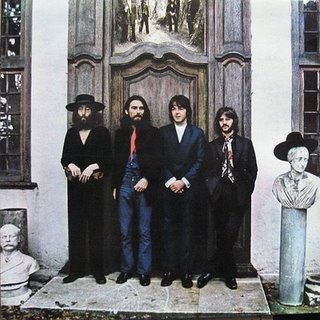 "Lady Madonna” got its first album release in the US on February 26th, 1970 on the makeshift compilation album “Hey Jude” (originally titled “The Beatles Again”). This was the premier release of the newly created stereo mix of the song. The album peaked at #2 on the Billboard chart, not being able to overtake Simon & Garfunkel's award-winning “Bridge Over Troubled Water.” This album eventually saw a compact disc release on January 21st, 2014. "Lady Madonna” got its first album release in the US on February 26th, 1970 on the makeshift compilation album “Hey Jude” (originally titled “The Beatles Again”). This was the premier release of the newly created stereo mix of the song. The album peaked at #2 on the Billboard chart, not being able to overtake Simon & Garfunkel's award-winning “Bridge Over Troubled Water.” This album eventually saw a compact disc release on January 21st, 2014.
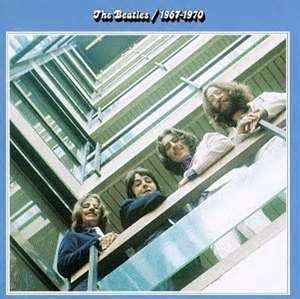 Next came its inclusion on the second official “greatest hits” package entitled “The Beatles / 1967 – 1970” (aka, the “Blue Album”). This album was released on April 2nd, 1973 and quickly topped the Billboard album chart at that time. This set was first released on compact disc on September 20th, 1993, and then as a remastered CD set on August 10th, 2010. Next came its inclusion on the second official “greatest hits” package entitled “The Beatles / 1967 – 1970” (aka, the “Blue Album”). This album was released on April 2nd, 1973 and quickly topped the Billboard album chart at that time. This set was first released on compact disc on September 20th, 1993, and then as a remastered CD set on August 10th, 2010.
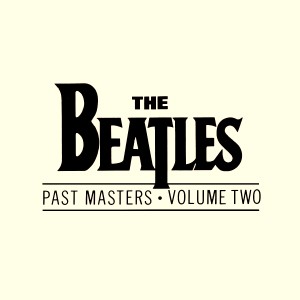 When the compact disc era was in full bloom, the CD “Past Masters – Volume Two” was released on March 7th, 1988 as a single disc, “Lady Madonna” being featured therein. Both volumes of "Past Masters" were combined to release a vinyl double-album on October 24th, 1988. When the Beatles catalog was undergoing remastering, it was then decided to adopt the double-album concept for both the CD and vinyl editions for the remastered re-releases, the 2-CD set coming out on September 9th, 2009 and the vinyl version coming out on November 12th, 2012. When the compact disc era was in full bloom, the CD “Past Masters – Volume Two” was released on March 7th, 1988 as a single disc, “Lady Madonna” being featured therein. Both volumes of "Past Masters" were combined to release a vinyl double-album on October 24th, 1988. When the Beatles catalog was undergoing remastering, it was then decided to adopt the double-album concept for both the CD and vinyl editions for the remastered re-releases, the 2-CD set coming out on September 9th, 2009 and the vinyl version coming out on November 12th, 2012.
 On March 18th, 1996, the special compilation album “Anthology 2” was released which, as described above, includes the newly created mix that accentuates the original rhythm track and a few overdubs. On March 18th, 1996, the special compilation album “Anthology 2” was released which, as described above, includes the newly created mix that accentuates the original rhythm track and a few overdubs.
 November 13th, 2000, was the date of release for the monumental selling “Beatles 1” album, it becoming the fourth biggest selling album ever, selling over 31 million copies worldwide. Since “Lady Madonna” reached the #1 spot in the UK, it earned its right to be included among the 27 tracks on this album, all of which reached the top spot in either Britain or America. A remastered version of this collection was released in September of 2011, and then a remixed version of the album was released on November 6th, 2015. November 13th, 2000, was the date of release for the monumental selling “Beatles 1” album, it becoming the fourth biggest selling album ever, selling over 31 million copies worldwide. Since “Lady Madonna” reached the #1 spot in the UK, it earned its right to be included among the 27 tracks on this album, all of which reached the top spot in either Britain or America. A remastered version of this collection was released in September of 2011, and then a remixed version of the album was released on November 6th, 2015.
 Then came the November 20th, 2006 released compilation album “Love,” put together for the Cirque du Soliel show of the same name. This album, featuring the newly created mix of the song as described above, was highly successful in the US, peaking at #4 on the Billboard album chart. Then came the November 20th, 2006 released compilation album “Love,” put together for the Cirque du Soliel show of the same name. This album, featuring the newly created mix of the song as described above, was highly successful in the US, peaking at #4 on the Billboard album chart.
 On September 9th, 2009, the CD box set “The Beatles In Mono” was released, which included all of the original mono versions of the Beatles catalog, “Lady Madonna” being included on a CD set entitled “Mono Masters,” the near equivalent to the “Past Masters” set already made available. The vinyl edition of this box set was released on September 9th, 2014. On September 9th, 2009, the CD box set “The Beatles In Mono” was released, which included all of the original mono versions of the Beatles catalog, “Lady Madonna” being included on a CD set entitled “Mono Masters,” the near equivalent to the “Past Masters” set already made available. The vinyl edition of this box set was released on September 9th, 2014.
 On November 9th, 2018, the "'White Album' 50th Anniversary Super Deluxe" box set was released. This set included two versions of "Lady Madonna," which were the original "take two" of the instrumental rhythm track and an extract of track three from the original four-track tape with all four Beatles fooling around in front of the microphones. On November 9th, 2018, the "'White Album' 50th Anniversary Super Deluxe" box set was released. This set included two versions of "Lady Madonna," which were the original "take two" of the instrumental rhythm track and an extract of track three from the original four-track tape with all four Beatles fooling around in front of the microphones.
 A 50th Anniversay edition of the compilation album "The Beatles / 1967 - 1970" (aka "The Blue Album") was released on November 10th, 2023, the Giles Martin stereo mix of "Lady Madonna" as detailed above, being included. This expanded release included 12 additional songs for a total of 38 tracks, and was made available as a double CD and as a triple vinyl release on both black and blue vinyl. A 50th Anniversay edition of the compilation album "The Beatles / 1967 - 1970" (aka "The Blue Album") was released on November 10th, 2023, the Giles Martin stereo mix of "Lady Madonna" as detailed above, being included. This expanded release included 12 additional songs for a total of 38 tracks, and was made available as a double CD and as a triple vinyl release on both black and blue vinyl.
 Various McCartney performances of “Lady Madonna” have been made available in America, these being the following: “Wings Over America” (released December 10th, 1976), “Paul Is Live” (released November 16th, 1993), “Back In The US” (released November 11th, 2002), “Good Evening New York City” (released November 17th, 2009), "Amoeba Gig" (released July 12th, 2019) and "One Hand Clapping" (released June 14th 2024). Various McCartney performances of “Lady Madonna” have been made available in America, these being the following: “Wings Over America” (released December 10th, 1976), “Paul Is Live” (released November 16th, 1993), “Back In The US” (released November 11th, 2002), “Good Evening New York City” (released November 17th, 2009), "Amoeba Gig" (released July 12th, 2019) and "One Hand Clapping" (released June 14th 2024).
Live Performances
The Beatles were past their touring days by 1968, as well as the performing of their latest singles on television shows. This being the case, as well as the fact that they were about to leave the country for India for a few months, the powers that be felt a desperate need to film a promotional clip for "Lady Madonna" before they left.
 The day scheduled to shoot this promo clip was February 11th, 1968. The Beatles entered EMI Studio Two at 4 pm with the intention of being filmed pretending to record “Lady Madonna,” overseen by (or directed by) the late Tony Bramwell for the newly formed Apple Films. However, John Lennon had a better idea. He had just written a new song, “Hey Bulldog,” and suggested that they record this new song instead, allowing the film crew to use the footage they captured during this session for the “Lady Madonna” promo. And this is what they did. The day scheduled to shoot this promo clip was February 11th, 1968. The Beatles entered EMI Studio Two at 4 pm with the intention of being filmed pretending to record “Lady Madonna,” overseen by (or directed by) the late Tony Bramwell for the newly formed Apple Films. However, John Lennon had a better idea. He had just written a new song, “Hey Bulldog,” and suggested that they record this new song instead, allowing the film crew to use the footage they captured during this session for the “Lady Madonna” promo. And this is what they did.
This promotional clip, which was shown at various times in Britain and America around the release of the single, shows The Beatles hard at work in the studio, but nothing could be synced up to convincingly portray the band playing “Lady Madonna.” Nonetheless, it is an interesting depiction of the camaraderie between the four of them, giving a sneak peak at what it was like to see The Beatles in action in a recording studio.
 Actually, two separate color 35mm promo clips were created from the footage from this day, both roughly similar to each other. One would get the impression from these films that John played piano on the song, since he was the one who played piano on “Hey Bulldog.” To help set matters straight, shots of Paul at the piano during a recording session at Chappell Studios for Cilla Black's song “Step Inside Love” were interspersed among the Beatles footage, as well as a final scene of Paul and Cilla leaving the studio on that day. Actually, two separate color 35mm promo clips were created from the footage from this day, both roughly similar to each other. One would get the impression from these films that John played piano on the song, since he was the one who played piano on “Hey Bulldog.” To help set matters straight, shots of Paul at the piano during a recording session at Chappell Studios for Cilla Black's song “Step Inside Love” were interspersed among the Beatles footage, as well as a final scene of Paul and Cilla leaving the studio on that day.
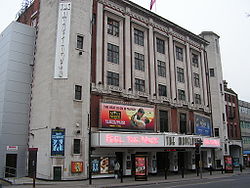 In later years, Paul would regularly include “Lady Madonna” in his set lists during his post-Beatles tours. The song was among the five Beatles selections that his band Wings included in their “Wings Over The World” tour, which ran from September 9th, 1975 (at the Gaumont Theatre in Southampton, England) to October 21st, 1976 (London, England). The song was then included in Paul's “New World Tour,” running from February 18th (Milan, Italy) to December 16th, 1993 (Santiago, Chile). His “Driving World” tour included it as well, running from April 1st (Oakland, California) to November 18th, 2002 (Osaka, Japan). In later years, Paul would regularly include “Lady Madonna” in his set lists during his post-Beatles tours. The song was among the five Beatles selections that his band Wings included in their “Wings Over The World” tour, which ran from September 9th, 1975 (at the Gaumont Theatre in Southampton, England) to October 21st, 1976 (London, England). The song was then included in Paul's “New World Tour,” running from February 18th (Milan, Italy) to December 16th, 1993 (Santiago, Chile). His “Driving World” tour included it as well, running from April 1st (Oakland, California) to November 18th, 2002 (Osaka, Japan).
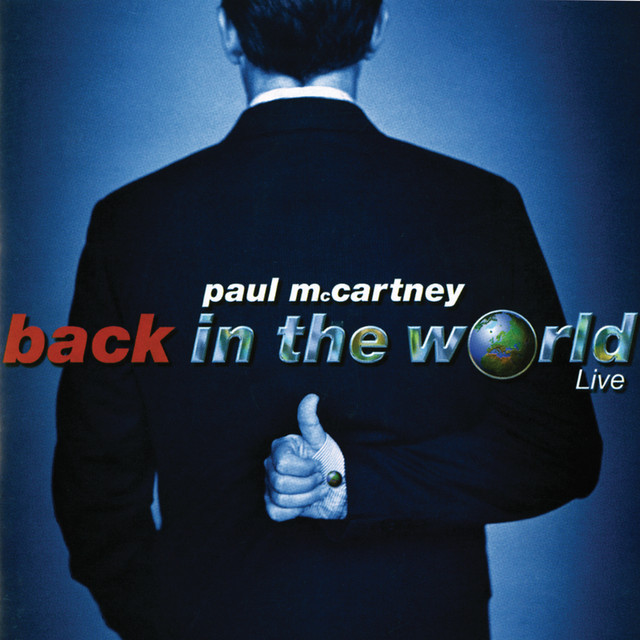 Paul's “Back In The World” tour contained “Lady Madonna” as well, which ran from March 25th (Paris, France) to June 1st, 2003 (Liverpool, England). Then came his “2004 Summer Tour,” running from May 25th (Gijon, Spain) to June 26th (Pilton, England) of that year. Paul's "Secret Tour" of 2007 also contained the song, as evidenced by its inclusion in his July 27th, 2007 Hollywood, California gig at Amoeba Music. His “Summer Live '09” tour included the song as well, this running from July 17th (New York, New York) to August 19th (Arlington, Texas) of that year. Then came his “Good Evening Europe” tour, which ran from December 2nd (Hamburg, Germany) to December 22nd, 2009 (London, England). Paul's “Back In The World” tour contained “Lady Madonna” as well, which ran from March 25th (Paris, France) to June 1st, 2003 (Liverpool, England). Then came his “2004 Summer Tour,” running from May 25th (Gijon, Spain) to June 26th (Pilton, England) of that year. Paul's "Secret Tour" of 2007 also contained the song, as evidenced by its inclusion in his July 27th, 2007 Hollywood, California gig at Amoeba Music. His “Summer Live '09” tour included the song as well, this running from July 17th (New York, New York) to August 19th (Arlington, Texas) of that year. Then came his “Good Evening Europe” tour, which ran from December 2nd (Hamburg, Germany) to December 22nd, 2009 (London, England).
 Paul continued to perform “Lady Madonna” in his following tours as well: “Up And Coming Tour,” running from March 28th, 2010 (Glendale, Arizona) to June 10th, 2011 (at the MGM Grand Garden Arena in Las Vegas, Nevada). “On The Run Tour,” running from July 15th, 2011 (New York, New York) to November 29th, 2012 (Edmonton, Canada). “Out There,” which ran from May 4th, 2013 (Belo Horizonte, Brazil) to October 22nd, 2015 (Buffalo, New York). “One On One,” which began on April 13th, 2016 (Fresno, California) and concluded on December 16th, 2017 (Auckland, New Zealand). "Freshen Up," which began on September 17th, 2018 (Quebec City, Canada) and ended on July 13th, 2019 (Los Angeles, California). "Got Back," which ran from April 28th, 2022 (Spokane, Washington) to December 19th, 2024 (London, England). Paul continued to perform “Lady Madonna” in his following tours as well: “Up And Coming Tour,” running from March 28th, 2010 (Glendale, Arizona) to June 10th, 2011 (at the MGM Grand Garden Arena in Las Vegas, Nevada). “On The Run Tour,” running from July 15th, 2011 (New York, New York) to November 29th, 2012 (Edmonton, Canada). “Out There,” which ran from May 4th, 2013 (Belo Horizonte, Brazil) to October 22nd, 2015 (Buffalo, New York). “One On One,” which began on April 13th, 2016 (Fresno, California) and concluded on December 16th, 2017 (Auckland, New Zealand). "Freshen Up," which began on September 17th, 2018 (Quebec City, Canada) and ended on July 13th, 2019 (Los Angeles, California). "Got Back," which ran from April 28th, 2022 (Spokane, Washington) to December 19th, 2024 (London, England).
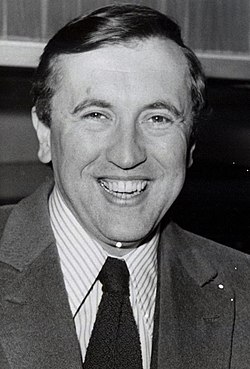 Paul would also pull this song out of his hat on different occasions when before an audience, such as during his “Chaos and Creation At Abbey Road” live concert he gave from the original EMI Studio Two where the majority of The Beatles music was recorded, this concert occurring on July 28th, 2005. On this occasion, he reworked the song into a slower tempo, calling the song “Old Lady In New Clothes.” He also performed the song on the British TV show “Later...With Jools Holland” in 2007, he touched on the song at the end of an interview for the “David Frost Show” in 2012, and he played the full song at the Philharmonic Pub in Liverpool on June 9th, 2018 for a filmed segment that appeared on the CBS television special "When Corden Met McCartney, Live From Liverpool," this program being broadcast on August 20th of that year. Paul would also pull this song out of his hat on different occasions when before an audience, such as during his “Chaos and Creation At Abbey Road” live concert he gave from the original EMI Studio Two where the majority of The Beatles music was recorded, this concert occurring on July 28th, 2005. On this occasion, he reworked the song into a slower tempo, calling the song “Old Lady In New Clothes.” He also performed the song on the British TV show “Later...With Jools Holland” in 2007, he touched on the song at the end of an interview for the “David Frost Show” in 2012, and he played the full song at the Philharmonic Pub in Liverpool on June 9th, 2018 for a filmed segment that appeared on the CBS television special "When Corden Met McCartney, Live From Liverpool," this program being broadcast on August 20th of that year.
 On April 18th, 2020, during the COVID 19 outbreak, Paul submitted a filmed segment of "Lady Madonna" played in a bluesy style on a Rhodes piano for the multi-network show entitled "One World: Together At Home." He also touched on the song during his 2021 Hulu documentary series "McCartney 3,2,1," where he also went into a bit of explanation concerning the song's writing. When interviewed by his daughter Mary McCartney in 2022 for her Disney+ documentary "If These Walls Could Sing," Paul once again couldn't help but perform "Lady Madonna" on the original piano in Abbey Road Studio Two. On April 18th, 2020, during the COVID 19 outbreak, Paul submitted a filmed segment of "Lady Madonna" played in a bluesy style on a Rhodes piano for the multi-network show entitled "One World: Together At Home." He also touched on the song during his 2021 Hulu documentary series "McCartney 3,2,1," where he also went into a bit of explanation concerning the song's writing. When interviewed by his daughter Mary McCartney in 2022 for her Disney+ documentary "If These Walls Could Sing," Paul once again couldn't help but perform "Lady Madonna" on the original piano in Abbey Road Studio Two.
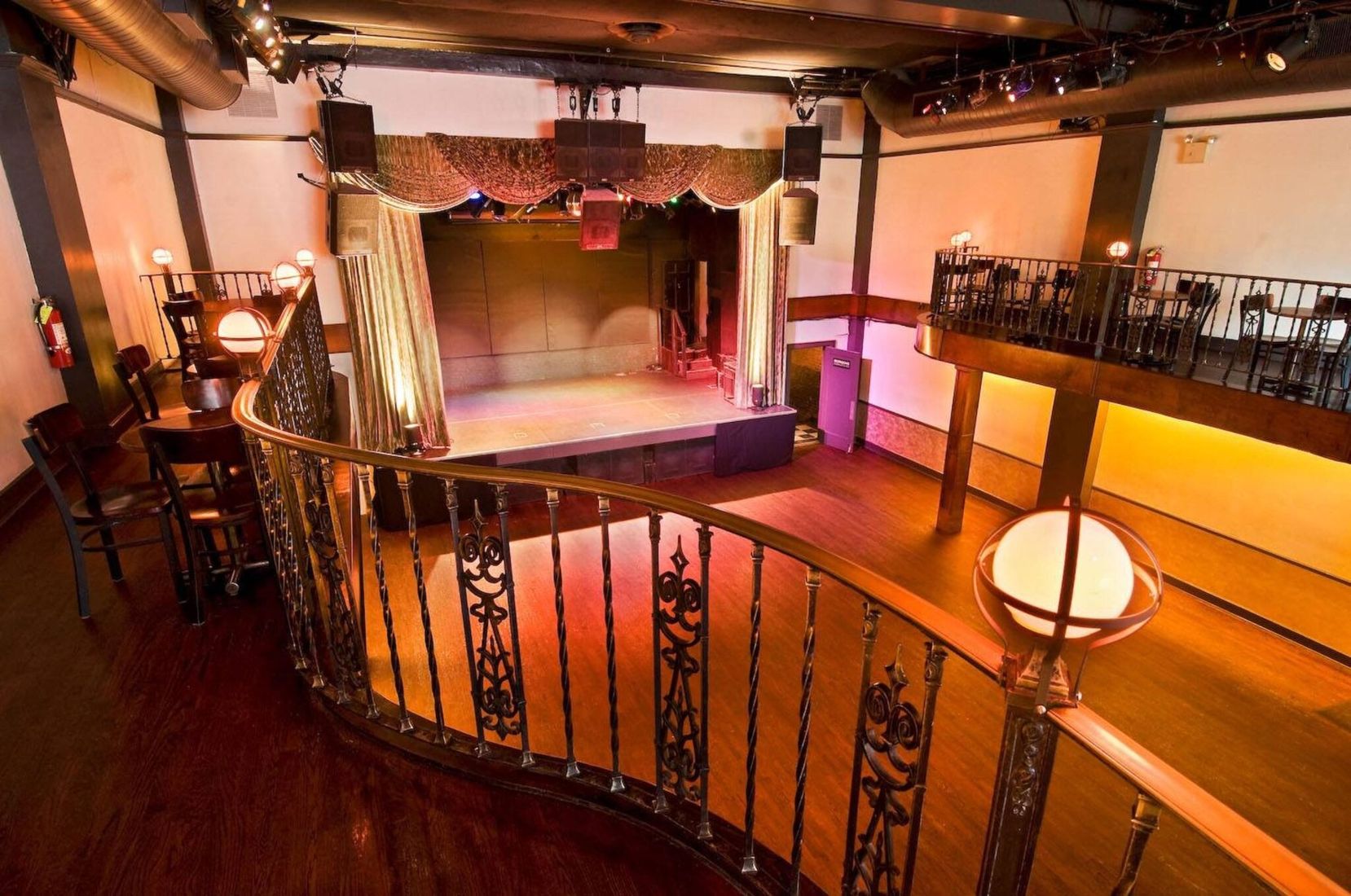 Interestingly, Paul and his group played a surprise three night residency at the Bowery Ballroom in New York City on February 11th, 12th and 14th, 2025, this final night being Valentine's Day. The group played "Lady Madonna" at each of these performances at this quaint 575-capacity venue in Manhattan. Interestingly, Paul and his group played a surprise three night residency at the Bowery Ballroom in New York City on February 11th, 12th and 14th, 2025, this final night being Valentine's Day. The group played "Lady Madonna" at each of these performances at this quaint 575-capacity venue in Manhattan.
Conclusion
 While the world expected The Beatles to continue down the psychedelic road that they had paved for everyone else in 1967, they decided that they had already taken it as far as they wanted to. The time had come to change again, and "Lady Madonna" was the first indication to the world of their new change in direction. While the world expected The Beatles to continue down the psychedelic road that they had paved for everyone else in 1967, they decided that they had already taken it as far as they wanted to. The time had come to change again, and "Lady Madonna" was the first indication to the world of their new change in direction.
 In the Hunter Davies 1968 biography “The Beatles,” Paul explains the pattern the group went by. “You go into a cycle, but you don't get carried away forever by it, because the more you know, the less you know. And there's always each other as safety valves...All of us will always appear to be changing, just because we don't conform. It's this not conforming, wanting to do something different all the time, which keeps our music different.” In the Hunter Davies 1968 biography “The Beatles,” Paul explains the pattern the group went by. “You go into a cycle, but you don't get carried away forever by it, because the more you know, the less you know. And there's always each other as safety valves...All of us will always appear to be changing, just because we don't conform. It's this not conforming, wanting to do something different all the time, which keeps our music different.”
Song Summary
“Lady Madonna”
Written by: John Lennon / Paul McCartney
- Song Written: January, 1968
- Song Recorded: February 3 and 6, 1968
- First US Release Date: March 18, 1968
- US Single Release: Capitol #2138
- Highest Chart Position: #4
- First US Album Release: Apple #SW-385 (SO-385) “Hey Jude” (“The Beatles Again”)
- British Album Release: Apple #PSCP 718 “The Beatles/1967-1970”
- Length: 2:17
- Key: A major
- Producer: George Martin
- Engineers: Ken Scott, Richard Lush, Geoff Emerick, Jerry Boys
Instrumentation (most likely):
- Paul McCartney - Lead and backing vocals, Piano (Hamburg Steinway Baby Grand), Bass Guitar (1964 Rickenbacker 4001S), mouth simulated brass, handclaps
- John Lennon - Lead Guitar (1965 Epiphone Casino ES-230TD), backing vocals, mouth simulated brass, handclaps
- George Harrison - Lead Guitar (1964 Gibson SG Standard), backing vocals, mouth simulated brass, handclaps
- Ringo Starr - Drums (1964 Ludwig Super Classic Black Oyster Pearl), tambourine, handclaps
- Harry Klein - baritone saxophone
- Ronnie Scott - saxophone (solo)
- Bill Jackman - baritone saxophone
- Bill Povey - tenor saxophone
Written and compiled by Dave Rybaczewski
|
IF YOU WOULD LIKE TO MAKE A DONATION TO KEEP THIS WEBSITE UP AND RUNNING, PLEASE CLICK BELOW!
Sign Up Below for our MONTHLY BEATLES TRIVIA QUIZ!
|